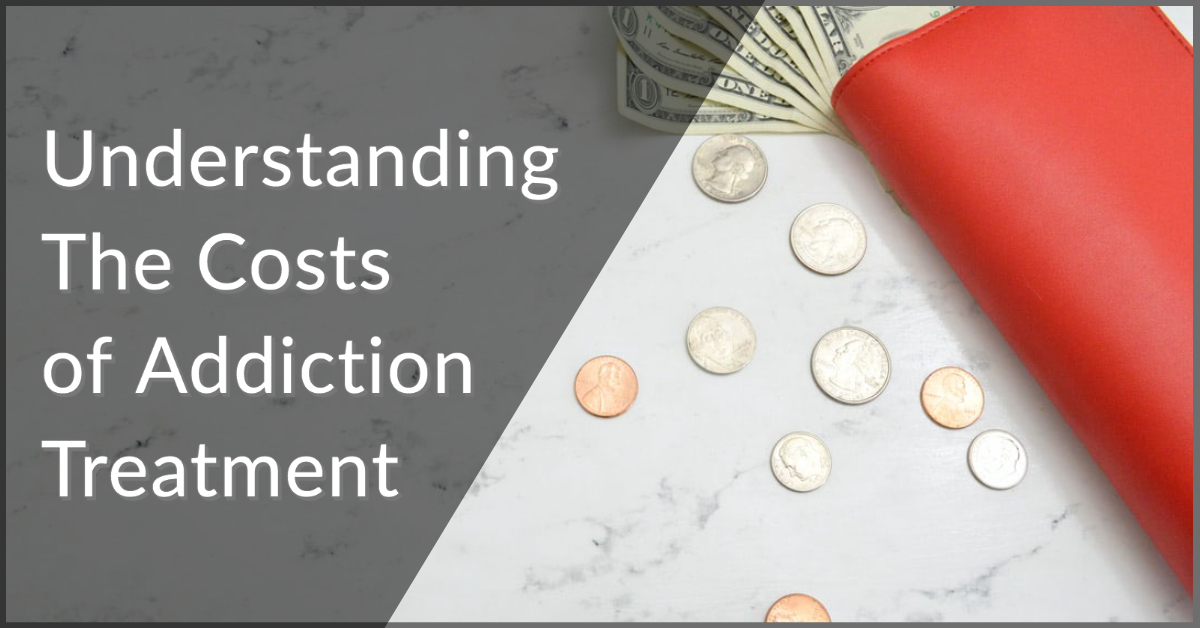The cost of addiction treatment depends on a variety of variables: the type of treatment center, its location, services, personal factors like mental health, as well as the length of stay. Understanding these differences can help you determine which center and level of care best align with you financially. Contact us to verify your insurance today.
The cost of addiction treatment varies between facilities and programs. Some programs are free while some cost thousands of dollars a day. No matter your finances, there is a center for you. The chance to recover from addiction is available to anyone if they know what resources can help them. There are also people (like our addiction specialists 888-707-2873) who can help you discover the best method to cover treatment. Most rehabs offer financial assistance, accept insurance plans or have financing alternatives.
Insurance plans are among the most typical ways of paying for rehab. The amount insurance coverage covers depends on the insurance provider and what the health provider accepts.
Kinds of insurance that may cover addiction care include:
- MedicaidMedicare
- State-financed medical insurance
- Private insurance plans
- Military coverage
Not everyone has coverage, but there are still methods to get the help you or a loved one should have. One method is to look for low-income or free options. The other is to look into programs that offer financing options. Financing is often a better choice as free rehabs frequently have restricted funding and waiting lists.
Numerous inpatient centers provide financing alternatives for those without coverage.
Some individuals might be anxious to take on debt, but it’s essential to see addiction rehab as a financial investment. Over time it pays off. Getting sober gives people the tools to get their life and profession on track. Recovered addicts are also able to conserve more because they aren’t spending on drugs or alcohol.
State Funded Rehabs Vs. A Private Rehab
Not all treatment centers are the same. When looking for treatment, your first decision should be deciding between a private facility or a state-funded facility.
State Funded (Free)
If you are looking for the most financially feasible option, there are facilities which are state funded. Being funded through the state, these facilities are often little to no cost to attend. Because these rehabs are typically low-cost or free, they are in high demand and therefore have long waitlists to attend.
Also, because funding is limited to what the state provides, the level of care is generally the basic levels of care. Counselors, therapists, and doctors at a state-funded facility have larger caseloads and can see up to 20 different people in a single day.
If you are not covered by health insurance and have limited funds to private pay for treatment, you may be limited to choose from state funded facilities in your area. While these facilities may not have the quality of care of private facilities, they can offer medical treatments, medications, therapies, and support needed to overcome your substance abuse.
Private Facilities
For those who are covered by health insurance or are fortunate enough to finance their treatment, private facilities might be a more effective option. Private facilities are funded through insurance and can therefore employ experienced healthcare professionals. Private drug and alcohol rehabs also offer a greater variety of personalization in your treatment sessions. Because counselors have more time to work with you, they can dive deeper into what makes you tick, how addiction affects you, and the necessary steps to improve your life. Not only are your therapy sessions longer and more intimate, but you will also work with the staff to formulate a specific treatment program consisting of multiple therapies like yoga, EMDR, Neurofeedback, Amino Acid Therapy, and a variety of other holistic therapy options not typically available at state funded facilities.
Private facilities also offer more comfortable living environments outside of treatment compared to state-funded facilities which are often hospitalized settings.
Private Treatment Vs. Affordable Private Treatment
However, even when comparing one private treatment to another, there are often differences as well. For instance, most high-end/luxury rehab facilities will accept insurance, but not necessarily be covered through insurance. Put simply, your insurance will offset the costs of treatment, but you will still be responsible for the remaining balance that insurance does not cover. With Coalition Recovery, these costs are simply your deductible and a maybe part of your out-of-pocket costs. With many treatment centers, these extra costs could be food, living, extra services, and even amenities. When calling a prospective center, always ask about these additional costs.
Types Of Addiction Treatment and Prices

The kind of care used by a rehab impacts the total price of getting sober. Treatment types are also different for some addictions. There are numerous other elements that impact the cost of rehab, from healthcare to amenities. The following estimates are based upon costs reported by studies and private facilities.
Detox
Outpatient detox ranges from $1,000 to $1,500 in total. A lot of inpatient rehabs include detox in the price of a program. The exact cost of detox depends upon whether it’s part of an inpatient program and the type of drug addiction being treated. Substances with hazardous detox side effects require more careful tracking, making the price greater.Inpatient RehabSome inpatient rehabs might cost around $6,000 for a 30-day program. Widely known centers frequently cost up to $20,000 for a 30-day program. For those requiring 60- or 90-day programs, the total average of prices might range anywhere from $12,000 to $60,000.
Outpatient Rehab
Outpatient programs for moderate to moderate addictions are cheaper than inpatient rehab. Numerous cost $5,000 for a three-month program. Some outpatient programs, such as the program at Hazelden Betty Ford, cost $10,000. The cost tag depends upon how often the individual visits the center weekly and for how long.
Medications
The kind of treatment and medications required affects the price of rehab. Some people do not require medication for their addiction. Medications frequently deal with alcohol and opiate addiction. It can cost several thousand dollars a year. Year-long methadone treatment for heroin users prices around $4,700. More often than not, these medications are at least partially (if not fully) covered through insurance plans.
The Price of Addiction
In the long run, rehab is not nearly as expensive as alcohol and drug addiction. Alcohol and drug users are more likely to avoid work and switch jobs regularly than sober individuals, which has a negative impact on income. The price of drugs, legal problems, health problems and loss of performance at work all add up over time.
An alcoholic who drinks a 12-pack a day consistently for a year pays over $3,000. This cost doesn’t include prospective legal issues that can cost thousands more. It’s more difficult to approximate the price of illicit drug addiction, however it can be much greater.
Some previous heroin users have reported paying tens of thousands of dollars on their obsession.The monetary costs of addiction are only part of the equation. They do not consist of the personal costs of relationships and a meaningful life.
What Factors Into the Price of Addiction Treatment?
There are a number of elements that impact the cost of rehab. A few of the predominant elements include:Type ofThere is a big divide in the price of inpatient and outpatient programs. The costs of inpatient programs are greater due to the fact that the costs of housing and intensive care are higher.The cost of these programs likewise depends upon the length of the program and place. A center in a state with a higher cost of living, like California, can be more pricey.
Treatments Offered
Some people don’t need medical detox when they begin rehab. Cocaine users usually don’t experience unsafe withdrawals when they stop using, so there is no technical detox besides being kept track of. Alcohol and heroin users frequently experience extreme withdrawals during detox and generally need medication.Those needing more medical care tend to pay more for rehab. Specific therapies like expert counseling likewise affect just how much you could pay.
Amenities and Luxuries
At inpatient rehab centers, additional “comfort” components can add to the cost. There’s a substantial difference in cost between basic and luxury facilities– fundamental rehab centers may cost $5,000 a month, while a luxury facility in Malibu might cost approximately $100,000 a month.Here are a few of the features that can increase the price of rehab:
- Premium Dining
- Fitness Center and Workout Facilities
- Spa
- Personal Suites
- Massage Therapy
- Entertainment (Including Horseback Riding, Tennis, and other options)
- Meditation and Yoga Classes.
The amenities provided by a rehab don’t come free of charge. Amenities may include massages, acupuncture, swimming pools, tennis courts, big acclaimed chefs or individual spaces. Because of amenities, high-end rehabs normally often visited by the famous and wealthy are pricey.
Luxury centers can cost tens of thousands of dollars per month. While a lot of rehabs aren’t this expensive, more features suggest a higher price tag.
We created Coalition Recovery because we often saw a polarization with most treatment centers. In the past, you were left with choosing between an affordable rehab with questionable care or an unaffordable rehab with excessive and unneeded amenities.
The heart of our treatment focuses on evidence-based treatments which have been proven to be the most effective means of treating addiction or substance abuse. Evidence-based therapies are also covered through insurance. By boiling down our program to utilizing the best practices available, we have been able to build a specialized team focusing strictly on counseling, behavioral therapy, mental health treatment, and medication management.
While we do offer extra amenities like a pool, fitness membership, and also provide holistic therapies such as art therapy, mindfulness, and yoga classes – these will be offered without any additional costs to your treatment.
We promise to be fully transparent of your costs from the moment you speak with our representatives. Worrying about finances can be challenging enough; even without the additional fees often tacked on after treatment.







